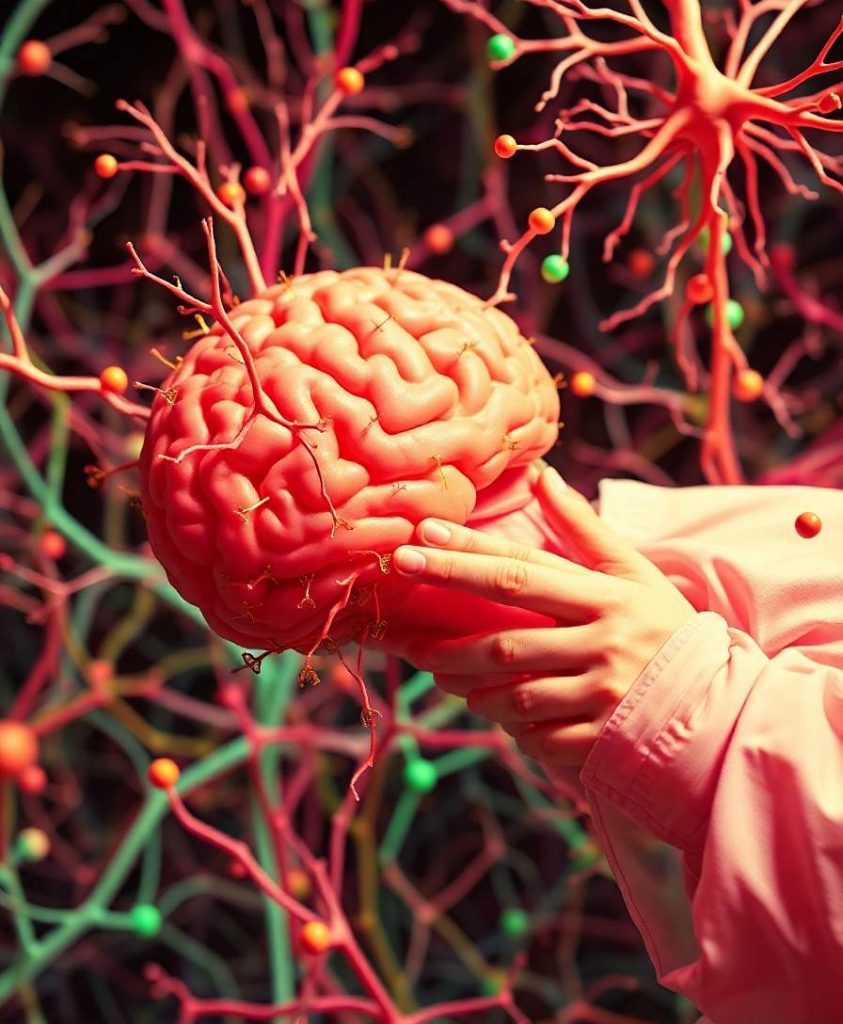Feeling that gentle, familiar sensation of your body settling into a restful state after a long day. Maybe you’ve noticed that as you age, your body’s response to substances like cannabis can feel different — more intense, more unpredictable, even alarming. That warm, relaxing feeling you once knew may come with a new set of risks, especially if you’re using cannabis for sleep, pain, or mental health concerns.
Older adults often turn to cannabis seeking relief from chronic issues like insomnia or anxiety. But as the body ages, it becomes more sensitive to psychoactive substances, making older users more vulnerable to adverse effects. The experience of feeling anxious, having a rapid heartbeat, or feeling dizzy after consuming cannabis isn’t just unpleasant — it can be dangerous, especially for people with underlying health conditions such as high blood pressure or heart rhythm disorders.
Why are older adults more at risk from cannabis use?
As we age, our body’s ability to process substances changes. Liver and kidney functions slow down, and brain chemistry shifts. This means that the same amount of cannabis that might have felt mild or manageable in youth can cause more pronounced effects in later years. For instance, older adults are more likely to experience heightened anxiety and heart palpitations after consuming cannabis, especially if they take products with higher THC levels, like some edibles or gummies.
Recent research shows that emergency room visits related to cannabis are rising among older adults. In California, for example, ER visits for those over 65 increased significantly over the past decade. Similarly, in Canada, hospitalizations and emergency visits due to cannabis use have surged among middle-aged and older populations. These numbers highlight a growing trend: more seniors are using cannabis, often for sleep or pain, but the health risks are becoming more apparent.
What should older adults consider before using cannabis?
If you’re contemplating using cannabis for health reasons, it’s vital to understand that your body may react differently than it did in your younger years. Starting with very low doses — sometimes called “start low, go slow” — can help prevent adverse reactions. It’s also essential to be aware of potential interactions with medications, especially those for heart conditions, high blood pressure, or mental health disorders.
Medication interactions can amplify side effects or diminish the effectiveness of your prescriptions, increasing the risk of falls, dizziness, or heart complications. For example, a recent case involved an older woman who took multiple high-dose THC gummies after struggling with sleep — and ended up in the emergency room with anxiety and heart palpitations. This highlights the importance of cautious use and consulting healthcare providers about cannabis, especially if you’re on other medications.
Understanding the risks is crucial because the perception that cannabis is entirely safe is misleading. Many older adults believe that cannabis is a natural remedy, but the potency of current products is much higher than in previous decades. The increased availability and marketing targeted at seniors contribute to this misconception, making it more important than ever to approach cannabis use with care and informed guidance.
While some find relief from sleep problems or chronic pain using cannabis, the evidence remains limited, and the potential for harm grows with higher doses or frequent use. Recognizing early warning signs — like increased anxiety, dizziness, or irregular heartbeat — can help prevent more serious health issues. Regular check-ins with your healthcare provider about your cannabis use are a wise step toward maintaining safety as you age.

In the end, understanding how cannabis affects aging bodies helps you make more informed choices that prioritize your well-being. It’s about balancing potential benefits with the real risks, especially when your body’s resilience naturally diminishes over time. Being cautious isn’t about avoiding relief — it’s about ensuring that your pursuit of comfort doesn’t come at the cost of your health.
Learn More: As Cannabis Users Age, Health Risks Appear To Grow
Abstract: Benjamin Han, a geriatrician and addiction medicine specialist at the University of California-San Diego, tells his students a cautionary tale about a 76-year-old patient who, like many older people, struggled with insomnia. “She had problems falling asleep, and she’d wake up in the middle of the night,” he said. “So her daughter brought her some sleep gummies” — edible cannabis candies. “She tried a gummy after dinner and waited half an hour,” Han said. Feeling no effects, she took another gummy, then one more — a total of four over several hours. Han advises patients who are trying cannabis to “start low; go slow,” beginning with products that contain just 1 or 2.5 milligrams of tetrahydrocannabinol, or THC, the psychoactive ingredient that many cannabis products contain. Each of the four gummies this patient took, however, contained 10 milligrams. The woman started experiencing intense anxiety and heart palpitations. A young person might have shrugged off such symptoms, but this patient had high blood pressure and atrial fibrillation, a heart arrhythmia. Frightened, she went to an emergency room. Lab tests and a cardiac work-up determined the woman wasn’t having a heart attack, and the staff sent her home. Her only lingering symptom was embarrassment, Han said. But what if she’d grown dizzy or lightheaded and was hurt in a fall? He said he has had patients injured in falls or while driving after using cannabis. What if the cannabis had interacted with the prescription drugs she took? “As a geriatrician, it gives me pause,” Han said. “Our brains are more sensitive to psychoactive substances as we age.” Thirty-nine states and the District of Columbia now allow cannabis use for medical reasons, and in 24 of those states, as well as the district, recreational use is also legal. As older adults’ use climbs, “the benefits are still unclear,” Han said. “But we’re seeing more evidence of potential harms.” A wave of recent research points to reasons for concern for older users, with cannabis-related emergency room visits and hospitalizations rising, and a Canadian study finding an association between such acute care and subsequent dementia. Older people are more apt than younger ones to try cannabis for therapeutic reasons: to relieve chronic pain, insomnia, or mental health issues, though evidence of its effectiveness in addressing those conditions remains thin, experts said. In an analysis of national survey data published June 2 in the medical journal JAMA, Han and his colleagues reported that “current” cannabis use (defined as use within the previous month) had jumped among adults age 65 or older to 7% of respondents in 2023, from 4.8% in 2021. In 2005, he pointed out, fewer than 1% of older adults reported using cannabis in the previous year. What’s driving the increase? Experts cite the steady march of state legalization — use by older people is highest in those states — while surveys show that the perceived risk of cannabis use has declined. One national survey found that a growing proportion of American adults — 44% in 2021 — erroneously thought it safer to smoke cannabis daily than cigarettes. The authors of the study, in JAMA Network Open, noted that “these views do not reflect the existing science on cannabis and tobacco smoke.” The cannabis industry also markets its products to older adults. The Trulieve chain gives a 10% discount, both in stores and online, to those it calls “wisdom” customers, 55 or older. Rise Dispensaries ran a yearlong cannabis education and empowerment program for two senior centers in Paterson, New Jersey, including field trips to its dispensary. The industry has many satisfied older customers. Liz Logan, 67, a freelance writer in Bronxville, New York, had grappled with sleep problems and anxiety for years, but the conditions grew particularly debilitating two years ago, as her husband was dying of Parkinson’s disease. “I’d frequently be awake until 5 or 6 in the morning,” she said. “It makes you crazy.” Looking online for edible cannabis products, Logan found that gummies containing cannabidiol, known as CBD, alone didn’t help, but those with 10 milligrams of THC did the trick without noticeable side effects. “I don’t worry about sleep anymore,” she said. “I’ve solved a lifelong problem.” But studies in the United States and Canada, which legalized nonmedical cannabis use for adults nationally in 2018, show climbing rates of cannabis-related health care use among older people, both in outpatient settings and in hospitals. In California, for instance, cannabis-related emergency room visits by those 65 or older rose, to 395 per 100,000 visits in 2019 from about 21 in 2005. In Ontario, acute care (meaning emergency visits or hospital admissions) resulting from cannabis use increased fivefold in middle-aged adults from 2008 to 2021, and more than 26 times among those 65 and up. “It’s not reflective of everyone who’s using cannabis,” cautioned Daniel Myran, an investigator at the Bruyère Health Research Institute in Ottawa and lead author of the Ontario study. “It’s capturing people with more severe patterns.” But since other studies have shown increased cardiac risk among some cannabis users with heart disease or diabetes, “there’s a number of warning signals,” he said. For example, a disturbing proportion of older veterans who currently use cannabis screen positive for cannabis use disorder, a recent JAMA Network Open study found. As with other substance use disorders, such patients “can tolerate high amounts,” said the lead author, Vira Pravosud, a cannabis researcher at the Northern California Institute for Research and Education. “They continue using even if it interferes with their social or work or family obligations” and may experience withdrawal if they stop. Among 4,500 older veterans (with an average age of 73) seeking care at Department of Veterans Affairs health facilities, researchers found that more than 10% had reported cannabis use within the previous 30 days. Of those, 36% fit the criteria for mild, moderate, or severe cannabis use disorder, as established in the Diagnostic and Statistical Manual of Mental Disorders. VA patients differ from the general population, Pravosud noted. They are much more likely to report substance misuse and have “higher rates of chronic diseases and disabilities, and mental health conditions like PTSD” that could lead to self-medication, she said. Current VA policies don’t require clinicians to ask patients about cannabis use. Pravosud thinks that they should. Moreover, “there’s increasing evidence of a potential effect on memory and cognition,” said Myran, citing his team’s study of Ontario patients with cannabis-related conditions going to emergency departments or being admitted to hospitals. Compared with others of the same age and sex who were seeking care for other reasons, research shows these patients (ages 45 to 105) had 1.5 times the risk of a dementia diagnosis within five years, and 3.9 times the risk of that for the general population. Even after adjusting for chronic health conditions and sociodemographic factors, those seeking acute care resulting from cannabis use had a 23% higher dementia risk than patients with noncannabis-related ailments, and a 72% higher risk than the general population. None of these studies were randomized clinical trials, the researchers pointed out; they were observational and could not ascertain causality. Some cannabis research doesn’t specify whether users are smoking, vaping, ingesting or rubbing topical cannabis on aching joints; other studies lack relevant demographic information. “It’s very frustrating that we’re not able to provide more individual guidance on safer modes of consumption, and on amounts of use that seem lower-risk,” Myran said. “It just highlights that the rapid expansion of regular cannabis use in North America is outpacing our knowledge.” Still, given the health vulnerabilities of older people, and the far greater potency of current cannabis products compared with the weed of their youth, he and other researchers urge caution. “If you view cannabis as a medicine, you should be open to the idea that there are groups who probably shouldn’t use it and that there are potential adverse effects from it,” he said. “Because that is true of all medicines.”
Full article source: Read Full Article (External Site)


